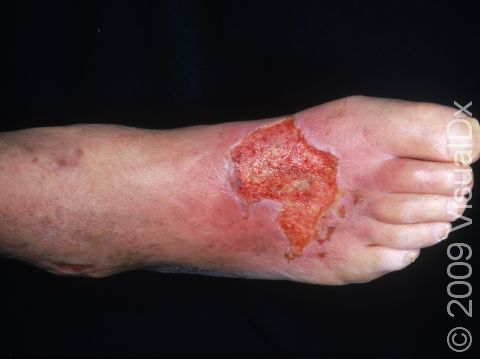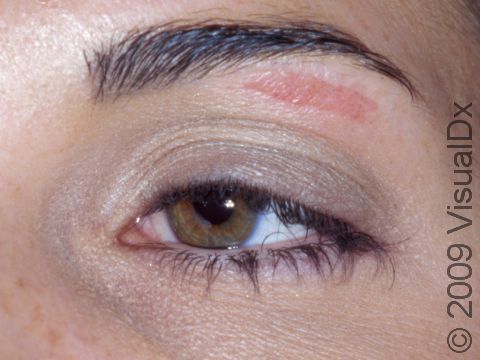Burns, First Aid
A burn is an injury to the skin resulting from direct contact or exposure to extreme heat or cold, friction, electricity, or chemicals.
- First-degree burns are superficial with red skin, pain, and no blistering.
- Second-degree burns involve destruction of the second layer of skin, causing blistering, swelling, and pain.
- Third-degree burns involve destruction of all layers of the skin, including fat, muscle, blood supply, and sometimes bone. Third-degree burns are often not painful because the nerve endings have been damaged.
Airway burns can affect the nose, throat, and windpipe and are typically caused by inhaling smoke, steam, or toxic fumes. The airway swells, which can cause suffocation. It is often difficult to determine the extent of airway burns.
The severity of a burn is determined, primarily, by its size of the depth of the burn. First-degree and second-degree burns smaller than 2-3 inches in diameter are considered minor burns, and they can be treated as specified in the First Aid Guide that follows. Seek professional medical care for all other burns. (When in doubt, assume the burn is serious.)
In the case of charred or white skin following a burn, or if the burn is large or severe, call 911.
Who's At Risk?
Burns can affect anyone.
Signs & Symptoms
Burns can appear in a variety of ways, depending on the extent and severity of the burn.
- Minor burns are about the size of a quarter or smaller. All first-degree burns, and any second-degree burns smaller than 2-3 inches in diameter that are NOT on the hands, feet, face, groin, buttocks, or over a major joint, are considered minor burns. These burns typically appear red and may blister.
- Severe burns are deep and may cover a large portion of the body or more than one area of the body. Second-degree burns larger than 2-3 inches in diameter on the hands, feet, face, groin, buttocks, or over a major joint and ALL third-degree burns are considered severe burns. Severe burns may appear white or charred.
In the case of burns to the airway, the person may have a charred mouth, singed facial hair, visible burns on the head or neck, and may be coughing or have difficulty breathing.
Self-Care Guidelines
First Aid Guide
General self-care measures for minor (first-degree and some second-degree) burns are:
- Run the affected area under cold water or immerse the area in cold water for 10-15 minutes. Unless the burn is in the mouth, do not apply ice directly to the affected area.
- Gently pat the area dry with a clean or sterile cloth, and cover the area with a nonadhesive, sterile, dry dressing.
- Take a pain reliever such as acetaminophen (eg, Tylenol), ibuprofen (eg, Advil, Motrin), naproxen (eg, Aleve), or aspirin (but never use aspirin in children or adolescents).
- Until the burn has healed, continue to apply clean, dry dressings, and change them daily.
For severe (extensive second-degree and all third-degree) burns, call 911. While awaiting professional medical care:
- Avoid further contact with smoke or heat, do not remove any clothing that is stuck to the affected area, and do not immerse the burn in cold water.
- If the person has stopped breathing or is unconscious, perform cardiopulmonary resuscitation (CPR).
- Cover the affected area with a cool, moist cloth or bandage.
Burns caused by chemical exposure require immediate first aid to lessen the chemical’s harmful effects while awaiting medical care. Your local Poison Control Center (800-222-1222 in the United States) can best provide this information. The following general measures can be taken while awaiting medical care:
- Remove traces of the chemical, contaminated clothing, and anything on the person that came in contact with the chemical, taking care not to spread it elsewhere.
- Continually flush the affected area with fresh water for several minutes.
- Apply cool, wet compresses to help relieve pain.
- Protect the burn area from friction by covering it with a loose, dry, sterile dressing.
Note: Do not leave the person alone, and watch for signs of shock.
In the case of burns to the eye, if the eye swells, if there are problems with vision, or if the burn is otherwise serious, seek medical attention. General first aid is as follows:
- Flush the eyes with cool water; if water increases pain symptoms, stop.
- Using light pressure, apply a cool compress to the eye.
Treatments
The medical professional will first determine the extent of the burn. In the case of an airway burn, a bronchoscopy or lung scan may be done. The wound should be cleansed with bactericidal solution, if necessary, and the medical professional will apply the appropriate dressing for the wound. They will provide instructions for at-home care. If necessary, the medical professional will give a tetanus vaccine and may discuss appropriate surgical procedures (eg, skin grafts).
Visit Urgency
If a burn is a third-degree burn or a second-degree burn larger than 2-3 inches in diameter; if it involves the hands, feet, face, groin, or buttocks; or if it is over a major joint, get medical help immediately. Do not use the level of pain as a determining factor in seeking medical care because many severe burns are painless.
If a burn has resulted in shock (a person with pale, clammy skin, bluish color to the lips and fingernails, decreased alertness, and overall weakness), call 911 immediately.
If a burn shows signs of infection (eg, increased pain, redness or red streaking toward the heart, swelling, discharge, or swollen lymph nodes), seek medical care.
Last modified on August 8th, 2024 at 2:42 pm

Not sure what to look for?
Try our new Rash and Skin Condition Finder

